David Campbell - German Infantryman vs Soviet Rifleman: Barbarossa 1941
Here you can read online David Campbell - German Infantryman vs Soviet Rifleman: Barbarossa 1941 full text of the book (entire story) in english for free. Download pdf and epub, get meaning, cover and reviews about this ebook. City: 7, year: 2014, publisher: Osprey Publishing, genre: History. Description of the work, (preface) as well as reviews are available. Best literature library LitArk.com created for fans of good reading and offers a wide selection of genres:
Romance novel
Science fiction
Adventure
Detective
Science
History
Home and family
Prose
Art
Politics
Computer
Non-fiction
Religion
Business
Children
Humor
Choose a favorite category and find really read worthwhile books. Enjoy immersion in the world of imagination, feel the emotions of the characters or learn something new for yourself, make an fascinating discovery.
- Book:German Infantryman vs Soviet Rifleman: Barbarossa 1941
- Author:
- Publisher:Osprey Publishing
- Genre:
- Year:2014
- City:7
- Rating:5 / 5
- Favourites:Add to favourites
- Your mark:
German Infantryman vs Soviet Rifleman: Barbarossa 1941: summary, description and annotation
We offer to read an annotation, description, summary or preface (depends on what the author of the book "German Infantryman vs Soviet Rifleman: Barbarossa 1941" wrote himself). If you haven't found the necessary information about the book — write in the comments, we will try to find it.
The Axis invasion of the Soviet Union on 22 June 1941 pitted Nazi Germany and her allies against Stalins forces in a mighty struggle for survival. Three German army groups - North, Center and South - advanced into Soviet-held territory; Generalfeldmarschall Fedor von Bocks Army Group Center, the largest of these three, was tasked with defeating General of the Army Dmitry Pavlovs Western Front in Belarus, and was assigned two Panzer Groups to achieve this. Bocks command would complete the encirclement and destruction of vast numbers of Soviet personnel and materiel at battles such as Biaystok-Minsk in June-July and Smolensk in July-August before being halted as German efforts centered on the conquest of the Ukraine, only to resume the offensive at the end of September. As the dust of summer gave way to the mud of autumn, the ensuing German drive on Moscow was slowed and then halted by a Soviet counteroffensive mounted by Konevs Kalinin and Timoshenkos Southwestern Fronts in December amid unusually harsh winter conditions, marking the failure of the German Blitzkrieg; Army Group Centre was forced back and Moscow remained in Soviet hands.
At the forefront of the German advance, fighting alongside the spearhead Panzer divisions, were the lorry-borne infantrymen of the motorized infantry divisions. Unlike the Schutzen, the specialist armored infantry integral to the Panzer divisions, these highly trained motorized formations were organized, armed and equipped as per their footslogging counterparts in the standard infantry divisions; together, these two troop types were the forerunners of the formidable Panzergrenadier formations that would provide the Germans with their mobile infantry forces in the climactic years of World War II.
Opposing the German mobile forces, the Soviets deployed rifle divisions and motorized rifle divisions, some of which would be upgraded to Guards status following outstanding combat performance. The Soviet forces fought tenaciously in the teeth of sometimes overwhelming local German superiority and with the threat of savage reprisals from the NKVD troops at their backs, suffering huge losses but remaining in the fight until the lines could be stabilized in the worsening winter conditions outside Moscow. Their clashes with the motorized infantrymen of the German vanguard would shape the outcome of this mighty battle for survival.
David Campbell: author's other books
Who wrote German Infantryman vs Soviet Rifleman: Barbarossa 1941? Find out the surname, the name of the author of the book and a list of all author's works by series.

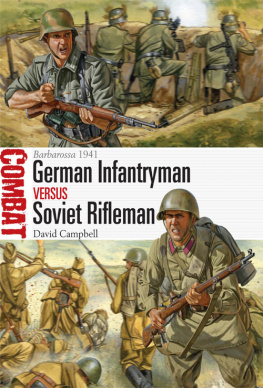
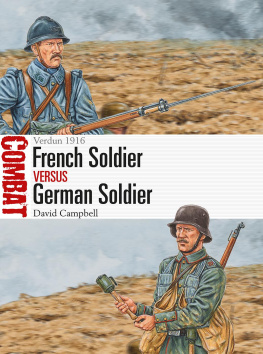
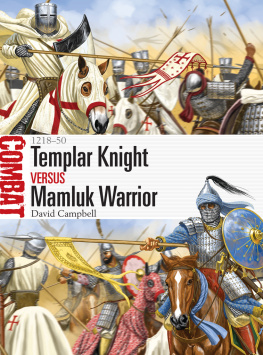
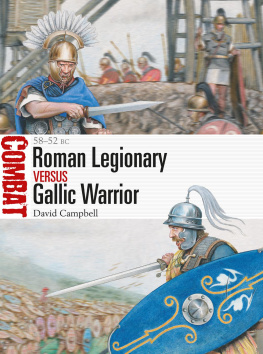

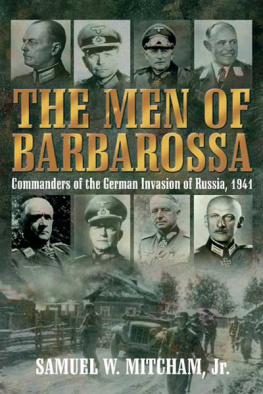
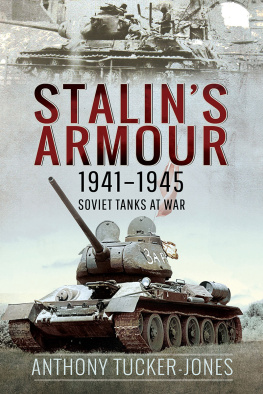
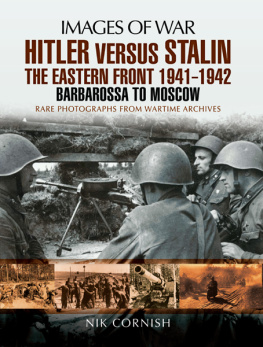
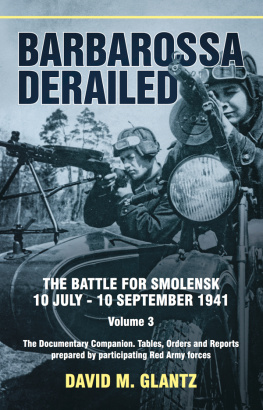
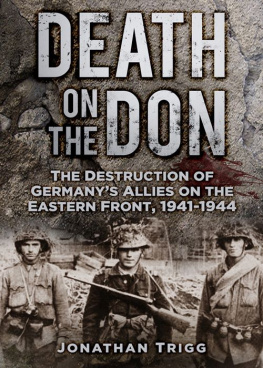
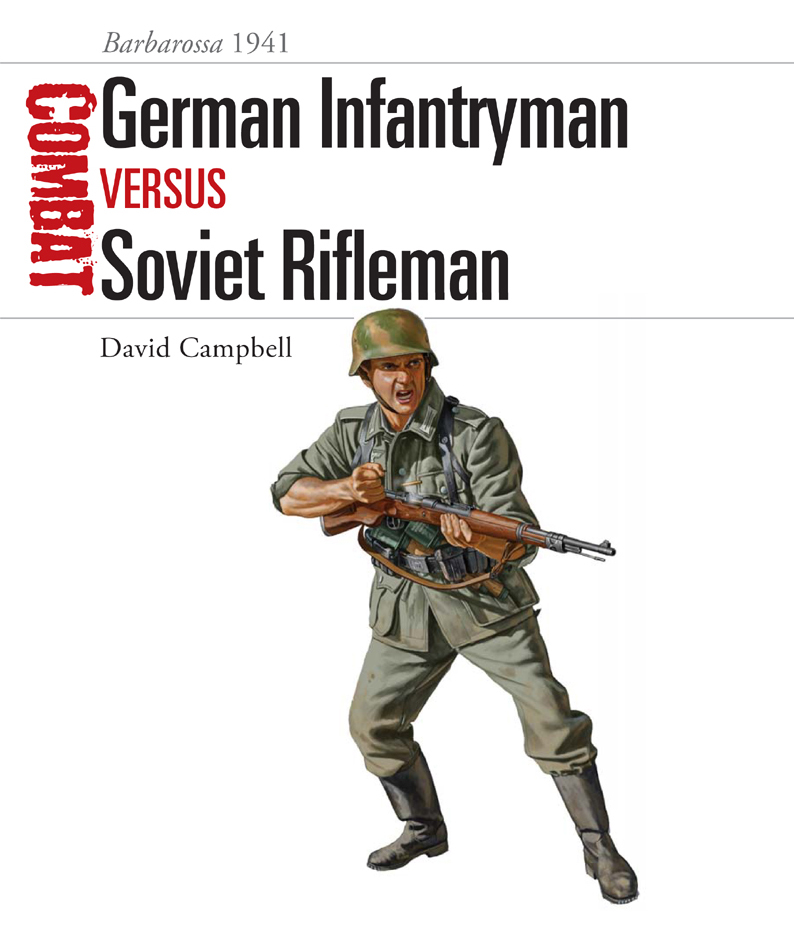
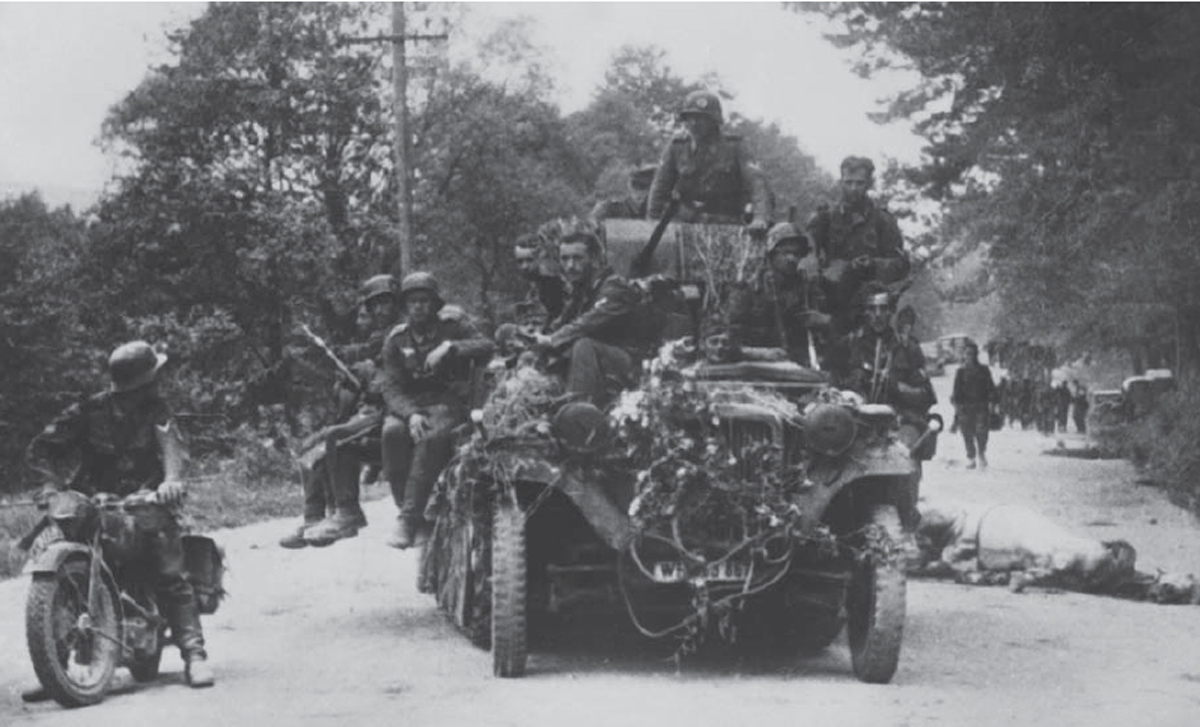

 2227 June: the Axis invasion begins at 0315hrs on 22 June; Generalfeldmarschall Fedor von Bocks Heeresgruppe Mitte consisting of 4. Armee, 9. Armee, Generaloberst Hermann Hoths Panzergruppe 3 and Generaloberst Heinz Guderians Panzergruppe 2 strikes across the Bug River, bypassing the fortress of Brest-Litovsk to the north and south. Bocks Panzergruppen lance forward in a giant pincer movement to envelop Bialystok and Minsk, snapping shut on 27 June.
2227 June: the Axis invasion begins at 0315hrs on 22 June; Generalfeldmarschall Fedor von Bocks Heeresgruppe Mitte consisting of 4. Armee, 9. Armee, Generaloberst Hermann Hoths Panzergruppe 3 and Generaloberst Heinz Guderians Panzergruppe 2 strikes across the Bug River, bypassing the fortress of Brest-Litovsk to the north and south. Bocks Panzergruppen lance forward in a giant pincer movement to envelop Bialystok and Minsk, snapping shut on 27 June. 22 June4 July: 10. Infanterie-Division (mot.), commanded by Generalleutnant Friedrich-Wilhelm Lper, moves into Byelorussia with General der Panzertruppen Leo Geyr von Schweppenburgs XXIV. Armeekorps (mot.), which also includes 3. and 4. Panzer-Divisionen. 10. Infanterie-Division (mot.) moves along the Brest-Litovsk highway, helps to stem an attempted break-out from the BialystokMinsk Kessel, passes through Sluzk and arrives at Bobruisk on the Berezina River, crossing over on a pontoon bridge on 4 July.
22 June4 July: 10. Infanterie-Division (mot.), commanded by Generalleutnant Friedrich-Wilhelm Lper, moves into Byelorussia with General der Panzertruppen Leo Geyr von Schweppenburgs XXIV. Armeekorps (mot.), which also includes 3. and 4. Panzer-Divisionen. 10. Infanterie-Division (mot.) moves along the Brest-Litovsk highway, helps to stem an attempted break-out from the BialystokMinsk Kessel, passes through Sluzk and arrives at Bobruisk on the Berezina River, crossing over on a pontoon bridge on 4 July. 22 June3 July: 29. Infanterie-Division (mot.), commanded by Generalmajor Walter von Boltenstern, moves across the border to the north of Brest-Litovsk with General der Panzertruppe Joachim Lemelsens XXXXVII. Armeekorps (mot.), which also includes 17. and 18. Panzer-Divisionen. The division moves up R2 (Rollbahn 2 the main WarsawMinsk highway), helps in the fighting around the edges of the Minsk
22 June3 July: 29. Infanterie-Division (mot.), commanded by Generalmajor Walter von Boltenstern, moves across the border to the north of Brest-Litovsk with General der Panzertruppe Joachim Lemelsens XXXXVII. Armeekorps (mot.), which also includes 17. and 18. Panzer-Divisionen. The division moves up R2 (Rollbahn 2 the main WarsawMinsk highway), helps in the fighting around the edges of the Minsk